mytest
eBooks, Books, and more from ARUDOU Debito (click on icon):
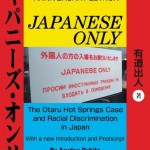
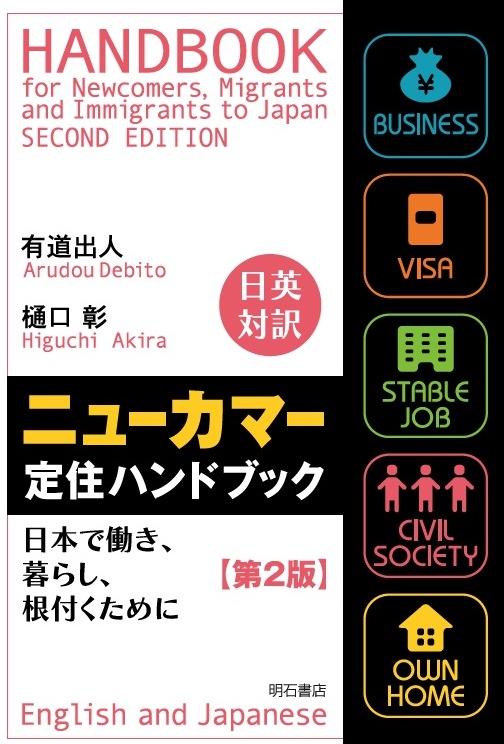
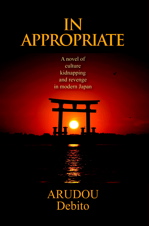
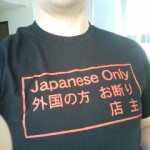

![]()

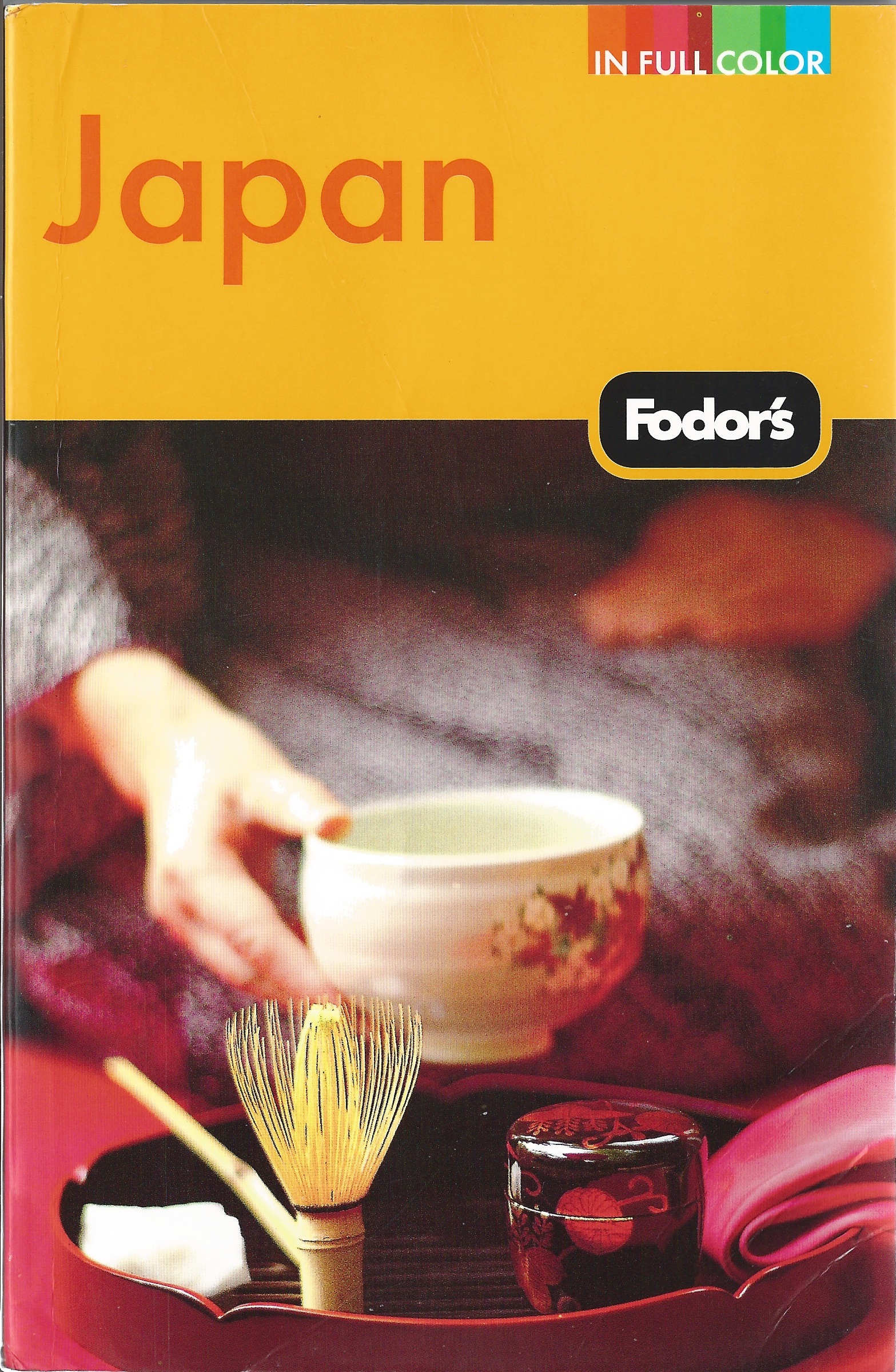
UPDATES ON TWITTER: arudoudebito
DEBITO.ORG PODCASTS on iTunes, subscribe free
“LIKE” US on Facebook at http://www.facebook.com/debitoorg
http://www.facebook.com/handbookimmigrants
https://www.facebook.com/JapaneseOnlyTheBook
https://www.facebook.com/BookInAppropriate
Hi Blog. In the vein of the recent discussion on treatment of NJ in Japanese media, here’s food for thought from a Debito.org Reader under the pseudonym “Bignose”. I’m intrigued but not 100% convinced, so I’ll open this one up under the Discussions heading for lighter moderation. Arudou Debito
//////////////////////////////////////////
Cute Kobito and Control Fantasies?
January 6, 2013
Hi Debito, It’s Bignose here.Remember those stereotypical pictures of Caucasian gaijin so beloved in this country? Looks like theeeey’re back with a vengeance! I am filing this with you to see what you and other readers think.
Initially I thought the point I want to make might be a stretch; that I might be being hypersensitive. It’s possible to see insults where there are none, or that comments received are misinterpreted through cultural misunderstandings, poor language ability, things taken out of context. So I am going to be quite careful what I say. But after long, long experiences living in Japan, to put it in a nutshell, I smell a rat.
In a sense, to me, the theme I am about to raise resonates with the issue over “Mr. James,” remember, our lovable goofy Kakakana Japanese spewing junk food munching baseball fan? I know you received a lot of criticism about raising this issue. For me the acid test is what would happen if the boot was on the other foot. If a major junk food conglomerate in the U.S. was selling teriyaki burgers flaunted by a slit-eyed, bespectacled, broken Engrish speaking salariman hairi lecommending TERIAKI BURGA, how would the Japanese embassy feel about it. I am not sure they would be happy happy happy about it all.
To the item at hand. It’s about othering and control fantasies referring to a “lost paradise” (a shitsuraken perhaps?) that was Japan when foreigners were cute and mainly for entertainment.
A few nights ago my wife (who is Japanese) and I and our infant child were having dinner at a friend’s place. Our friend is a longstanding one, she’s known and worked with my wife when they were at a major Japanese advertising company 15 years ago and our friend, who is in her 40s, is a professional and an account manager. She speaks reasonably fluent English and has done home stays, a year abroad, etc.
So the three of us were round our friend’s place where she cooked a lovely dinner and then she introduced us to a “must watch” waraibangumi called こびとづかん. I was very interested because as a father I monitor Japanese kids programs my wife wants to show our child quite closely, avoiding programs that I think are problematical (too cute, squealing, gender stereotypes and having very young performers, especially young girls, performing adult routines…and it’s not only my wife and I that find groups such as AKB48 extremely disturbing and problematic on many, many levels). I always try to balance out any media experiences my child has with Japanese media with alternatives in English, either from the U.S. or the UK, for example.
Courtesy http://blogs.yahoo.co.jp/singing_d_more/GALLERY/show_image.html?id=61443344
So my friend put on several こびとづかん segments from her DVD collection:
https://www.youtube.com/results?client=safari&rls=en&q=こびとづかん&oe=UTF-8&um=1&ie=UTF-8&sa=N&tab=w1
As I watched it, I thought fine, fine, it looks like a decent story, very entertaining. But I wondered, why is this kiddies program so entertaining for adults? Why is it such a hit? My friend’s eye were glowing, and she was clearly getting very excited.
By the second minute I started to find the patronizing tone grating, largely because it reminds me of how I am still sometimes treated by Japanese people dealing with gaijin, you know as if we are some sort of stupid alien pets. Or perhaps sometimes it’s just trying to be kind and well meaning to the alien. Or perhaps it’s just me, I was thinking.
As soon as our little critter appeared in the third minute, I realized I felt a little bit uncomfortable, but I couldn’t put my finger on why.
http://www.youtube.com/watch?v=95dEI_hCwIQ
[NB: Note that the newspaper put down as a cage to catch the critter is in English…]
Then suddenly in just on the 4th minute, our friend starting squealing in laugher. As our stupid but harmless character [kakure momojiri] she loved so much because he was so cute was inching his way up the trap showing his pink ass, our friend squealed out “XXXXX-san, it looks just like YOU!” and she started giggling uncontrollably.
I went along with it but I felt even more unsettled. I do want to say that her friend has never seen my (admittedly) pink-ish ass and secondly I don’t think our lovable momo-munching kobito friend looks like me. I’m relatively slim, even if I am not as young as I used to be.
But when our little friend ….whoops!…bikkuiri !!! hilariously plopped into the tender trap prepared for him, the yen started to fall, so to speak.
Before I go any further, I’d like readers to look at the other pictures from the set of characters for this series:
Notice anything?
Bignoses! They all look like that older grumpy University English teacher you had that you didn’t really like and had to put up with, with his strange alien ideas and his attitude problem at not playing the game and being “yasashii,” i.e. entertainment.
They even have blackfaced “kokujin” characters with even bigger flatter noses and big lips.
Where are the Asian characters? There are none.
As I watched further, more things fell into place. The lovable western looking kobito is lured into a world thinking he’s going to get his nice juicy peach, not knowing in fact that he’s going to be completely controlled as a lovable pet that is going to be patted and taken care of until his part is played.
It struck me why this children’s program such a huge hit with adults. On one level they are great stories, but I really am not sure that it is a good lesson to take creatures out of nature and turn them into entertainment pets. But as they are not humans and with only limited intelligence, no harm done, no doubt! Yep, an there are many more problematical kiddies programs out there involving sexualization and gender stereotyping, violence and etc. and all sorts of garbage from just about anywhere you care to name in the world.
But on another level, this to me seems all about appealing to the control fantasies of othering gaijin. Controllable kobito lovingly lured into traps by their own stupidity to be cared for and controlled and as entertainment for Japanese.
I thought about it and I thought about it. I said to my wife, am I being oversensitive? She was completely confused. So I said, well, what if all these kobito had slanted eyes and were yellow and this was a U.S. show. Would you feel comfortable about it. Then the penny dropped for her too.
There is a lot more could say at this point, but I just wanted to share this with other Debito readers to see what they thought. “Bignose.”
ENDS
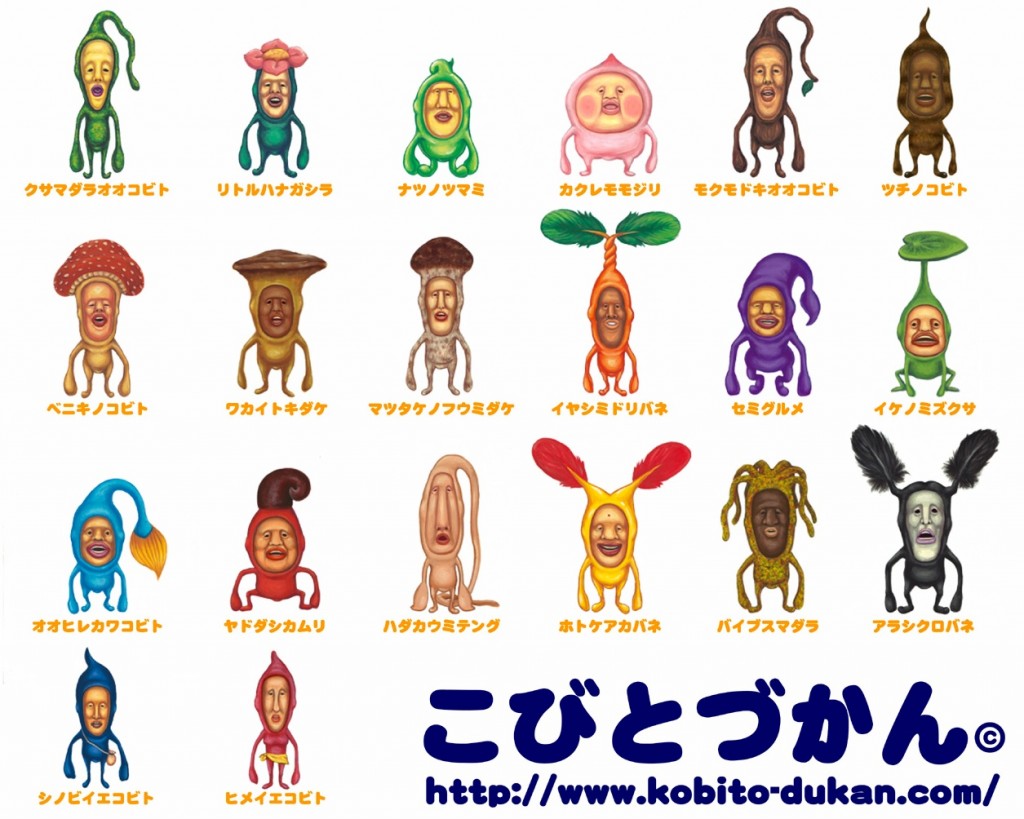
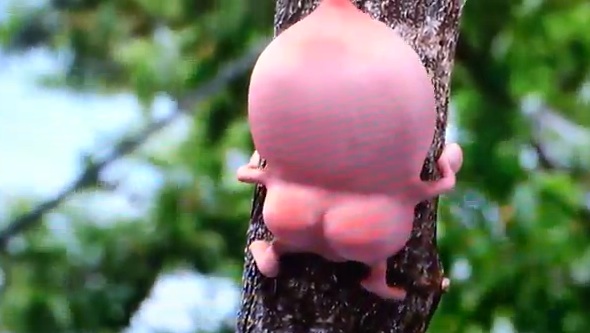
15 comments on “Discussion: “Bignose” on Cute “Kobito-zukan” comic characters for kids and NJ control fantasies?”
Some of the characters look Asian to me, unless that”s just projection.
Could it be just projection, do you think?
http://shop.kobito-dukan.com/shopdetail/001001000030/order
This one looks asian but at the same time I can see what you are saying.
@ Me #2
That one does seem to look ‘asian’, but since there are many Koreans and Chinese in Japan, it doesn’t preclude the character in question being a ‘gaijin’ in a ‘control fantasy’, just like those poor Thai workers imported/deported after the Thai floods last year.
Anyway, since I will soon be leaving Japan, and have nothing to lose, I recently have come to enjoy conducting many small scale real life experiments. Today after reading this thread, I asked a Japanese associate about the program (of which they claimed to know nothing), and then showed them the images posted above. They didn’t identify the characters as being NJ caricatures. So I said ‘Well, why are those ones black? If they are a race of little people, like the Smurfs, shouldn’t they all be the same color?’ To which I received the reply ‘Ah, but the Smurfs are just a cartoon.’ What the hell does that mean? Before I could formulate a witty riposte, my acquaintance (fueled, I sensed at this point, by confidence as a result of my speechlessness) let all the chips fall off his shoulder, and proudly remarked, ‘Why do you foreigners have to keep trying to make us accept your ways? This is Japan. Our ways are different. Why do you want us to be the same?’. In that moment, I decided that the previous statement that these were just random ‘characters’ in a TV program was pure tatemae.
And here in lies the rub; in cases like this (as with whaling, or human rights and child abduction) the Japanese are playing the victim in a tongue in cheek, middle finger up at you at the same time, kind of way, and they know they are doing it. Like Sean Connery says to Wes Snipes in Rising Sun, ‘Next they’ll be accusing you of racism.’ It’s just a tactic, not an honest emotion. It can’t be, since they have no lack of compunction about being racist to others.
The ‘acid test’? Can you seriously imagine a program like this, with little yellow buck-toothed. slant-eyed characters on TV in the US or Europe? No way! The TV station would never air such a program for fear of the legal action that it would incur against them, due to the kind of laws the Japanese say they don’t need. Case closed!
“But I wondered, why is this kiddies program so entertaining for adults? Why is it such a hit? My friend’s eye were glowing, and she was clearly getting very excited…”
Whats up with this lame friend? Its a kid’s program, she should grow up. Was the relief of no longer working for Dentsu/Hakuhodo such a second childhood regression?
“our friend squealed out “XXXXX-san, it looks just like YOU!” and she started giggling uncontrollably.”
I think this was clearly the punchline, what she had been building up to all evening.
“The lovable western looking kobito is lured into a world thinking he’s going to get his nice juicy peach, not knowing in fact that he’s going to be completely controlled as a lovable pet that is going to be patted and taken care of until his part is played.”
This would have been a great come-back. If she is going to say it looks like you, might as well let our imaginations run riot and draw all the parallels we want to.
>Where are the Asian characters? There are none.
Several of them look Asian. But a lot of characters who are central to Japanese popular culture and who are clearly Japanese in the context of their backstories have different eye and hair color and/or darker skin. Naruto has blue eyes and blond hair, to name just one. So it is not at all apparent that those characters that look non-Japanese are actually supposed to be “foreign.”
I think the racial stereotypes have been incorporated into at least some of the characters. Take for example バイブスマダラ (Vibe Sumadara), the African-looking character that is second from the right on the third line in the image Debito has posted. Here’s a link to an official explanation:
http://kobito-dukan.com/kobito/kobito_17.html
It says that he is normally friendly but “scary when angered” (怒ると怖い). I’ve heard “黒人は怖い” (blacks are scary) so often that it makes me reluctant to accept the characterization of this African-looking character as purely coincidental.
He’s also described as being homeless (特定のすみかをつくらず、転々とする). On the surface, his love of herbs (草食で特に薬草が好き) doesn’t seem to have anything to do with stereotypes about blacks. On the other hand, when one reads (on the following web page) that he emits smoke gets sleepy after “eating” his “herbs” (薬草を食べ、煙を出しはじめると眠くなっていきます), it seems pretty clear that the “herbs” are “weed” or marijuana. Then when he gets sleepy, he sleeps in a running shoe (運動靴). So, we have African (or American-American) appearance, sometimes cute but sometimes “scary” image, homelessness, love of marijuana and Nikes. I’m not sure how kids and adults interpret all this but I’m pretty sure I know where the people who invented the character got their inspiration.
http://ameblo.jp/rinzoudaro/entry-11196430822.html
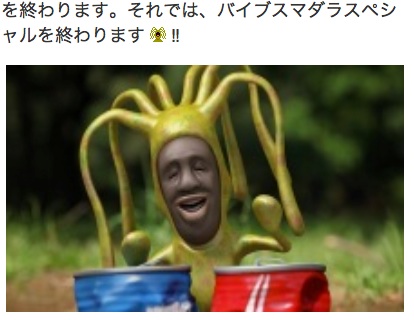
Here’s a footnote to my last post. If you take a look at the following page
http://ameblo.jp/rinzoudaro/entry-11199693050.html
you’ll see images of Vibe Sumadara “eating” his “herb” in a way that looks like he may as well be smoking it. This is also associated with his musical activity. One Japanese commentator referred to his “African-American-like rhythmic sensibility” (黒人チックな、ノリのよさそうなこびと):
http://ameblo.jp/budokapapa/entry-11394256445.html
Hence the “vibe” in his name.
Jim’s participant-‘Why do you foreigners have to keep trying to make us accept your ways? This is Japan. Our ways are different. Why do you want us to be the same?’
Answer: because you claim to be a G7 country in the western “club”. Or are you just reaping the benefits without playing by the rules?
Now as a westerner you sometimes feel a guilt trip about possibly imposing your “colonial” beliefs on Asia.
But, Japan was also a colonialist power. That now claims to be “western”.
The J participant in Jim”s experiment quoted above should not equate “be the same” with human rights, anti hate speech legislation or signing the Hague Convention. That is just common sense.
If getting Japan to implement these treaties is “being the same” or “colonialist”, then bring it on! Join the club, after all….
@ Baudrillard #8
‘Now as a westerner you sometimes feel a guilt trip about possibly imposing your “colonial” beliefs on Asia.’
Don’t worry, I don’t feel guilty at all. Nor should I.
To misquote something I read last week on a different blog; Japan’s got enough ‘social uniqueness’ (read ‘abusive social anachronisms’) as it is. Without the changes it has been forced to accept by the west (black ships, losing the war), Japanese society would make Sharia look progressive.
Let’s see what happens after Sick-note wins his upper house majority, changes the constitution, and starts turning the social clock back to the (imagined image of the) 1930’s.
I’d say that it’s pretty obvious that “Vibe Sumadra” is meant to represent a spliff-smoking black guy whose got rhythm. It’s a stereotype.
The question is whether or not it’s offensive.
Reminds me of “Rastamouse”: a BBC kids’ TV character, which caused a lot of controversy a while back, attracting a lot of complaints, but also a lot of support.
What do folks think?
http://www.youtube.com/watch?v=4ZCvydOxcq0
Well, I was waiting for someone to spot our rhythmical pot smoking and irrationally crazy kokujin friend. With a bit of “Carrib” thrown in, man.
I am sure kokujin the world over are over the moon about being stereotyped like that.
Yesterday’s Sambo is today’s Vibe Sumadra.
What next, the Japanese will be using black stereotypes for entertainment!
I personally thought all this stuff died out with Bob Sapp, who made his money playing the crazy nigger for the Yakuza and network TV-backed “Kakutogi” (proving, for those of us who have read Whiting’s works, that the more things appear to change in Japan, the more they stay the same).
With fewer entertainers willing to take the dime, perhaps this more subtle racism is the new way forward.
There will always be a new Borudo commercial replete with awkward blonde-haired blue-eyed foreign housewife speaking broken Japanese, being loud, and making many social faux pas (especially for a 30 second commercial spot) waiting in the wings if you ever thought you could go a day without seeing some sort of stereotyping of foreigners on television.
In Tarentino’s “True Romance”, Gary Oldman played a rasta gangster. Now that was thinking outside the box, and made it interesting.
Sadly, this Vibe Sumadra is hardly innovative, it is just the recycling of boring and outdated racial stereotypes that are loved and cherished in Japan.
So much for Cool Japan. Zzzzzzzz.
I`ve seen these figures before, but I never thought of them as racialized or representing any particular group in any way. But after reading this entry, I guess they do look like caricatures of foreigners.
Talking of ‘characters’ and racism, saw this in the Japan Times.
It’s a light hearted analysis of the competition to find a mascot for Tokyo’s 2020 Olympic bid. Doraemon won, but as the author points out, the blue cat was not the most qualified applicant for the job; in fact Kitty chan/Hello Kitty not only more well known in the wider world (50,000 products sold in over 60 countries), but also has international relations experience;
‘ambassador for UNICEF (since 1983) and as Japan’s tourism ambassador to China and Hong Kong, in 2008.’
So why did Doraemon beat her?
Well, herein lies what appears to be a very scathing comment wrapped in the smooth velvet of satire! Firstly, Kitty appeals as an empowered and internationally minded woman (you can bet the old gits on the Tokyo Olympic committee didn’t like that one little bit), and secondly Kitty’s fictional ‘backstory’ (a backstory, I might add, invented entirely from thin air by Kitty’s Japanese creators and owners) claims that one of her parents is Japanese, the other is English, and that Kitty lives in London! (yes! FICTIONAL though she may be, Kitty is ‘halfu’ and you can just imagine the look of disgust on the faces of the Tokyo Olympic committee when that information was laid before them!).
So the committee went running back to the safety of their showa era childhood friend Doraemon (god forbid anyone should have anything so much as like an ‘original idea’ and try something new). The poor old blue cat must be tired, can’t someone put him to sleep? Please?
http://www.japantimes.co.jp/community/2013/04/20/our-lives/doraemon-trumps-hello-kitty-for-olympic-games-ambassador/#.UXK_uBwSGkM